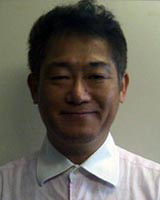On 11 March 2011, the Tohoku-Kanto earthquake struck rural Japan. The magnitude of the earthquake was 9.0, which made it the largest earthquake in recorded history in Japan, and the fourth-largest earthquake in the world since 1900. Subsequent tsunamis devastated the Pacific coast of the Tohoku region. Six days after the disaster, the number of confirmed deaths has already exceeded 5000 and is expected to exceed 10 000. Approximately 9000 people are missing and 400 000 people are being housed in evacuation shelters1. Hydrogen explosions at nuclear power reactors following the disaster are dispersing radiation.
The hardest-hit areas are in the most rural region of Japan. The Tohoku region located in the northeast is characterized by its cold weather, and its agriculture, forestry and fisheries industries. The population densities of the three most affected prefectures - Fukushima, Miyagi, and Iwate - are 147, 322, and 87 persons/km2, respectively, all of which are under the average population density of Japan (337 persons/km2). The percentages of those aged 65 years and older are 22.7%, 19.9% and 24.5%, respectively (nationally 20.1%)2. Medically, these areas are among the most underserved in Japan. The number of physicians per 100 000 population in Fukushima, Miyagi, and Iwate prefectures are 183.2, 204.6 and 178.3, respectively (nationally 212.9)3. In addition, working-age people and physicians are strongly concentrated away from these areas in the inland prefectural capital areas. The coastal fishing villages, towns and cities with smaller populations, higher elderly rates and fewer medical resources have been hardest hit by this cluster of disasters.
The particular features of this (and other) rural disasters are summarized (Fig1). While this disaster most affects the health status of people in the rural northeast region of Japan, the existing shortage of healthcare resources in rural areas has been exacerbated by the destruction of hospitals, clinics and nursing homes and the loss of healthcare staff. Because the affected areas are isolated, it is difficult to transport essential commodities (food, water and fuel etc), aid materials and rescue teams. Even communities in Fukushima Prefecture, which is more readily accessed than other prefectures because of its proximity to the Tokyo metropolitan region, radiation leaks are preventing the arrival of materials and human resources. As a result, the rescue activities in these areas are more delayed than after the Great Hanshin-Awaji earthquake in 1995 which occurred directly under one of Japan's largest cities4.

Figure 1: Characteristics of a rural disaster.
Other rural geographic, demographic and cultural characteristics are intensifying the seriousness of this disaster. The inclement weather in northeast Japan has worsened, and due to the lack of electricity and oil, evacuated residents are spending freezing nights in unheated shelters. Many of these people are farmers and fishermen. Unlike urban residents, their lives are rooted in their land and communities, with houses and land inherited from their ancestors. The sudden loss of their jobs, land, homes, and families is catastrophic socially, economically and psychologically. And because many of the people in this region were elderly, in addition to their injuries, many survivors will have pre-existing chronic diseases. Elderly survivors in rural areas are particularly vulnerable to the chronic effects of stress, which will follow this disaster5. A substantial proportion of survivors will leave the area and relocate, resulting in these rural areas becoming even more under-populated.
National and international support for survivors is urgently needed. In addition to emergency land traffic, special transportation (such as helicopters) is needed to bring much needed materials to deeply stricken areas. Many of the people who lost their homes and jobs are expected to live in shelters or temporary housing for substantial periods of time. Long-term plans to allocate human resources for health are essential to support these vulnerable communities which were medically underserved even before earthquake. Japan needs the participation of healthcare workers from all parts of the country to assist in providing aid to those affected by this crisis.
We salute those rural health professionals who have stayed in their regions and are struggling against all odds to provide care and comfort to their communities. We invite others to join them. We look forward to stories of hope arising from the courage and determination of those who care in the midst of this awful devastation. In the mean time, we trust that they know they are not alone, and certainly not forgotten. It is time to offer every assistance available to these people in desperate need - and those who have the courage to care for them.
Masatoshi Matsumoto, MD1 and Kazuo Inoue, MD2
1Asian Regional Editor, Rural and Remote Health, and
Department of Community Based Medical System
Faculty of Medicine, Hiroshima University, Hiroshima
2Department of Community Medicine
Teikyo University School of Medicine, Tokyo
Japan
References
1. National Police Agency. [Damage situation of the 2011 Tohoku District - Off The Pacific Ocean Earthquake]. (Online) 2011. Available: http://www.npa.go.jp/archive/keibi/biki/index.htm (Accessed 17 March 2011; in Japanese).
2. Ministry of Internal Affairs and Communications. [The 2005 Population Census]. (Online) no date. Available: http://www.e-stat.go.jp/SG1/estat/GL02100104.do?gaid=GL02100102&tocd=00200521 (Accessed 17 March 2011; in Japanese).
3. Ministry of Health, Labour and Welfare. [Physician, Dentist and Pharmacist Census 2008]. (Online) no date. Available: http://www.e-stat.go.jp/SG1/estat/GL02100103.do?kicd=00450 (Accessed 17 March 2011; in Japanese).
4. Cabinet Office, Government of Japan. [Disaster records of the Great Hanshin-Awaji Earthquake]. (Online) 2006. Available: http://www.bousai.go.jp/1info/kyoukun/hanshin_awaji/index.html (Accessed 17 March 2011; in Japanese).
5. Minami J, Kawano Y, Ishimitsu T, Yoshimi H, Takishita S. Effect of the Hanshin-Awaji earthquake on home blood pressure in patients with essential hypertension. American Journal of Hypertension 1997; 10: 222-225.

